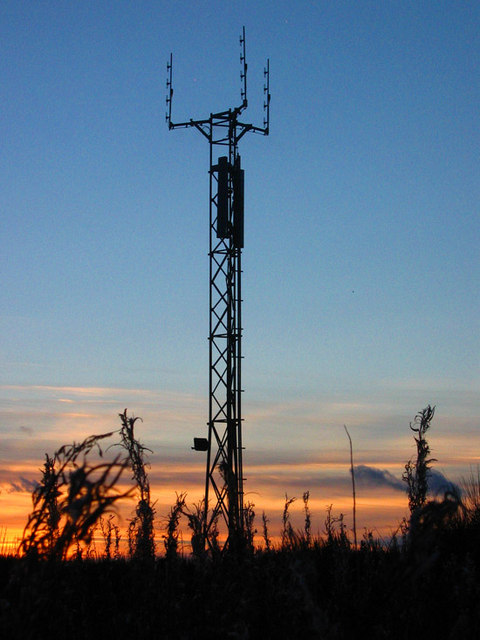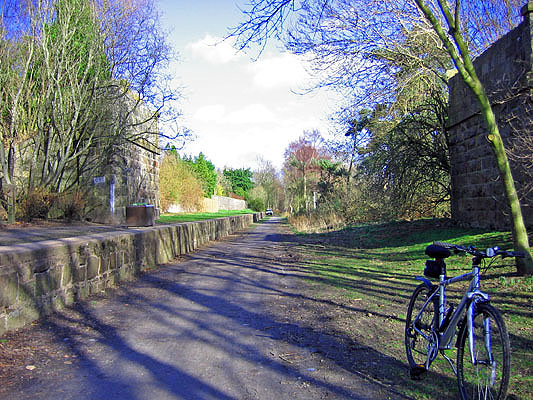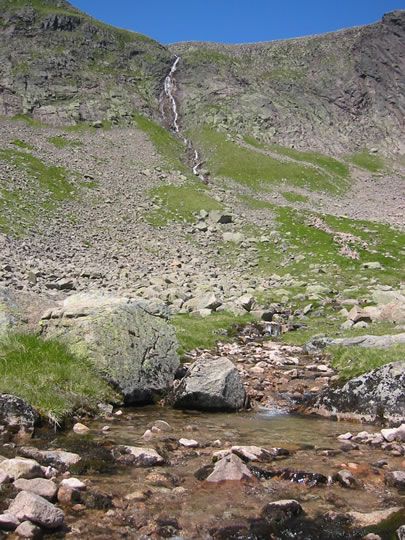|
Peterculter
Peterculter ( sco, Petercouter), also known as Culter (Scots: ''Couter''), is a suburb of Aberdeen, Scotland, about inland from Aberdeen city centre. Peterculter is on the northern banks of the River Dee, near the confluences with Crynoch Burn and Leuchar Burn. Following the 1996 Scottish council boundary changes it became part of the City of Aberdeen's Lower Deeside ward. The latter part of the name is said to come from the Gaelic compound word "Cul-tir", which signifies the "back part" of the country. History About south west of the Peterculter is the site of the Roman marching camp at Normandykes. King William the Lion bestowed the church of Kulter, "iuxta Abirdene", upon the Abbey and monks of St Mary of Kelso, about 1165–1199. The gift was afterwards confirmed by Mathew, Bishop of Aberdeen, within whose diocese the church sat. Alan of Soltre, chaplain, who had probably been an ecclesiastic of the hospital, or monastery of Soutra, in Lothian, was presen ... [...More Info...] [...Related Items...] OR: [Wikipedia] [Google] [Baidu] |
Culter Railway Station
Culter railway station was opened on 8 September 1853 by the Deeside Railway and served the town of Peterculter that is locally known as Culter. The Deeside Railway was taken over by the GNoSR and in 1894 Culter was the terminus for the Aberdeen suburban service although a few trains continued to Banchory. Despite the 1937 closure of many other stations on the Aberdeen suburban service, Culter remained open until 1966 as an intermediate station on the Deeside Railway that ran from Aberdeen (Joint) to Ballater. Culter is located in the parish of Peterculter, Aberdeenshire, Scotland. History The first single platformed station was opened in 1853 and stood to the west of the replacement provided at the track doubling of 1892. The goods yard lay to the east and was approached from that end and remained after the new station that was opened close to the ruins of St Peter's Chapel. A short line ran to the Culter Paper Mill and the town developed around this site. The line west to ... [...More Info...] [...Related Items...] OR: [Wikipedia] [Google] [Baidu] |
Normandykes
Normandykes (Grid Reference: NO 830994) is the site of a Roman marching camp to the southwest of Peterculter, City of Aberdeen, Scotland. The near-rectangular site, measuring approximately , covers about of the summit and eastern slopes of a hill overlooking the River Dee and the B9077 road further south. Aerial photographs for Normandykes have been archived between 1947 and 1976. The camp is about , or less than half a day's march, north of the Raedykes camp. It is possible that the actual route taken would have entailed one day's march, over a route likely chosen to avoid the Red Moss, a virtually uncrossable bog near the present day village of Netherley. Normandykes was first excavated in the year 1935 by Richmond and MacIntyre; construction is thought to date to the Antonine or Severan periods. The site is designated a scheduled ancient monument. See also * Raedykes * Balbridie * Crynoch Burn * Deers Den * Glenmailen * Leuchar Burn * Maryculter House * Ythan W ... [...More Info...] [...Related Items...] OR: [Wikipedia] [Google] [Baidu] |
William Duff (writer)
William Duff (1732–1815) was a Scottish Presbyterian minister and one of the first writers to analyse the nature of genius as a property of human psychology.. His ''Essay on Original Genius'' is frequently cited as a landmark in the Western analysis of genius and creativity. Ministry and family Duff was a Scottish minister and M.A., was licensed by the presbytery 25 June 1755, called 18 September, and ordained 8 October, when he was appointed to the parish of Glenbucket, Aberdeenshire. Thence he was transferred to Peterculter in the same county, 24 October 1766, being admitted 4 March 1767. He was nominated minister of Foveran, also in Aberdeenshire, in February 1774, and took up his home a year later. There he got a new church built in 1794, and died father of the synod, 23 February 1815, in the eighty-third year of his age, and sixtieth of his ministry. Theory of genius Duff was primarily interested in establishing the cognitive traits that explained variance in people' ... [...More Info...] [...Related Items...] OR: [Wikipedia] [Google] [Baidu] |
Culter Sports Centre
{{Disambig ...
Culter may refer to: * Culter, South Lanarkshire, Scotland, United Kingdom * ''Culter'' (fish), a genus of cyprinid fish * Culter F.C., a junior football club from the village of Peterculter, Aberdeen, Scotland * Culter School, a primary school in Aberdeen * Peterculter, commonly shortened to Culter, a suburb of Aberdeen See also * Coulter (other) Coulter may refer to: People * Coulter (surname) * Coulter Osborne (born 1934), Canadian arbitrator and former Associate Chief Justice of Ontario Places * Coulter, South Lanarkshire, Scotland, a village and civil parish * Coulter, Iowa, United Sta ... [...More Info...] [...Related Items...] OR: [Wikipedia] [Google] [Baidu] |
River Dee, Aberdeenshire
The River Dee ( gd, Uisge Dhè) is a river in Aberdeenshire, Scotland. It rises in the Cairngorms and flows through southern Aberdeenshire to reach the North Sea at Aberdeen. The area it passes through is known as Deeside, or Royal Deeside in the region between Braemar and Banchory because Queen Victoria came for a visit there in 1848 and greatly enjoyed herself. She and her husband, Prince Albert, built Balmoral Castle there which replaced an older castle. Deeside is a popular area for tourists, due to the combination of scenic beauty and historic and royal associations. It is part of the Cairngorms National Park, and the Deeside and Lochnagar National Scenic Area. The Dee is popular with anglers and is one of the most famous salmon fishing rivers in the world. The New Statistical Account of Scotland attributed the name Dee as having been used as early as the second century AD in the work of the Alexandrian geographer Claudius Ptolemy, as ''Δηοῦα'' (=Deva), meaning 'g ... [...More Info...] [...Related Items...] OR: [Wikipedia] [Google] [Baidu] |
Deeside Way
The Deeside Way is a rail trail that follows, in part, the bed of the former Deeside Railway in Aberdeenshire. Forming part of the National Cycle Network (National Route 195) the trail leads from Aberdeen to Ballater. The route The pathway runs from Duthie Park, Aberdeen to Peterculter, with two breaks across quiet country roads and a larger one at the busy Milltimber Brae. It then leaves the route of the old line, following a country road for around a mile along Coalford Croft to Old Manse Wood, whence there is a narrow path into Drumoak. The route follows a pavement beside the A93 North Deeside Road for a few hundred yards to a signposted path that rejoins the former railway line to Crathes, where it is necessary to use another short stretch of pavement besdide the A93 and the A957 to a minor road onto the path once more. This leads past Milton of Crathes, and alongside the Deeside Railway to arrive in Bellfield Park in Banchory. The route from Banchory continues on the S ... [...More Info...] [...Related Items...] OR: [Wikipedia] [Google] [Baidu] |
Robert Roy MacGregor
Robert Roy MacGregor ( gd, Raibeart Ruadh MacGriogair; 7 March 1671 – 28 December 1734) was a Scottish outlaw, who later became a folk hero. Early life Rob Roy was born in the Kingdom of Scotland at Glengyle, at the head of Loch Katrine, as recorded in the baptismal register of Buchanan, Stirling. His parents were the local Clan MacGregor Tacksman, Donald Glas MacGregor, and Margaret Campbell. He was also descended from the Clan MacDonald of Keppoch through his paternal grandmother. In January 1693, at Corrie Arklet farm near Inversnaid, he married Mary MacGregor of Comar (1671–1745), who was born at Leny Farm, Strathyre. The couple had four sons: James Mor MacGregor (1695–1754), Ranald (1706–1786), Coll (died 1735) and Robert (1715–1754)—known as Robìn Òig or Young Rob. It has been argued that they also adopted a cousin named Duncan, but this is not certain. Jacobite risings Along with many Highland clansmen, at the age of eighteen Rob Roy MacGregor togeth ... [...More Info...] [...Related Items...] OR: [Wikipedia] [Google] [Baidu] |
Alexander Cuming
Sir Alexander Cuming, 2nd Baronet (1691–1775) was a Scottish adventurer to North America; he returned to Britain with a delegation of Cherokee chiefs. He later spent many years in a debtors' prison. Early life Cuming was born (according to his manuscript autobiography) in Edinburgh on 18 December 1691. He was the only son of Sir Alexander Cumming, 1st Baronet, Sir Alexander Cuming, M.P. (c.1670–1725), the first baronet of Peterculter, Culter, Aberdeenshire, by his first wife, Elizabeth; she was the second daughter of the second wife of Sir Alexander Swinton, a Scottish judge. (He had several sisters and a half-brother, James Cuming of Breda, by his father's second wife) In 1714 he was called to the Scottish bar, and also held a captain's commission in the Russian army. From his manuscripts, it seems that Cuming was induced to quit the legal profession by a pension of £300 a year being granted to him by the government at Christmas 1718, and that it was discontinued at Christm ... [...More Info...] [...Related Items...] OR: [Wikipedia] [Google] [Baidu] |
Maryculter
Maryculter () or Kirkton of Maryculter is a village in the Lower Deeside area of Aberdeenshire, Scotland. The River Dee separates it from the town of Peterculter, and the B979 road runs through Maryculter. Maryculter House Hotel lies slightly north of the village along the south bank of the River Dee and to the west of Templars Park. The Old Mill Inn, a former coaching inn dating back to the 18th century lay at the mouth of the Crynoch Burn from 1797 until its demolition in February 2021 after being damaged by an extensive fire. At the edge of the village of Maryculter is a public forest land, known as the Oldman Wood, through which flows the Crynoch Burn. Also the children's theme park, StoryBook Glen, which also consists of a shop and restaurant is located near the old church which is still in use today as a Church of Scotland. Other notable vicinity buildings include the former Lairhillock Inn which closed in March 2020 and Muchalls Castle. Maryculter also has an anima ... [...More Info...] [...Related Items...] OR: [Wikipedia] [Google] [Baidu] |
Aberdeen
Aberdeen (; sco, Aiberdeen ; gd, Obar Dheathain ; la, Aberdonia) is a city in North East Scotland, and is the third most populous city in the country. Aberdeen is one of Scotland's 32 local government council areas (as Aberdeen City), and has a population estimate of for the city of Aberdeen, and for the local council area making it the United Kingdom's 39th most populous built-up area. The city is northeast of Edinburgh and north of London, and is the northernmost major city in the United Kingdom. Aberdeen has a long, sandy coastline and features an oceanic climate, with cool summers and mild, rainy winters. During the mid-18th to mid-20th centuries, Aberdeen's buildings incorporated locally quarried grey granite, which may sparkle like silver because of its high mica content. Since the discovery of North Sea oil in 1969, Aberdeen has been known as the offshore oil capital of Europe. Based upon the discovery of prehistoric villages around the mouths of the ... [...More Info...] [...Related Items...] OR: [Wikipedia] [Google] [Baidu] |
City Of Aberdeen
gd, Comhairle Cathair Obar Dheathain , native_name_lang = , other_name = , image_skyline = Town House, Municipal Offices and Court Houses in Aberdeen.jpg , image_caption = Aberdeen Town House , image_flag = , image_shield = Aberdeen-arms.png , image_blank_emblem = Aberdeen City Council logo.svg , blank_emblem_type = , image_map = Aberdeen City in Scotland.svg , map_caption = , coordinates = , subdivision_type = Sovereign State , subdivision_name = , subdivision_type1 = Constituent Country , subdivision_name1 = , subdivision_type2 = , subdivision_name2 = , seat_type = Admin HQ , seat = Aberdeen , government_footnotes ... [...More Info...] [...Related Items...] OR: [Wikipedia] [Google] [Baidu] |
Leuchar Burn
Leuchar Burn is a stream that rises in the Loch of Skene, in Aberdeenshire, Scotland Initially near the headwaters Leuchar Burn flows in a southerly course;United Kingdom Ordnance Survey Map, Landranger 45, Stonehaven & Banchory, 1:50,000 scale (2004) as it approaches the Royal Deeside, the watercourse rotates to the southeast, ultimately forming a boundary between Aberdeenshire and Aberdeen City. The stream then veers southerly once again before merging to the Culter Burn, which joins the River Dee at the village of Peterculter. See also *Durris Castle *Normandykes Normandykes (Grid Reference: NO 830994) is the site of a Roman marching camp to the southwest of Peterculter, City of Aberdeen, Scotland. The near-rectangular site, measuring approximately , covers about of the summit and eastern slopes of a hi ... References Rivers of Aberdeenshire {{Scotland-river-stub ... [...More Info...] [...Related Items...] OR: [Wikipedia] [Google] [Baidu] |






